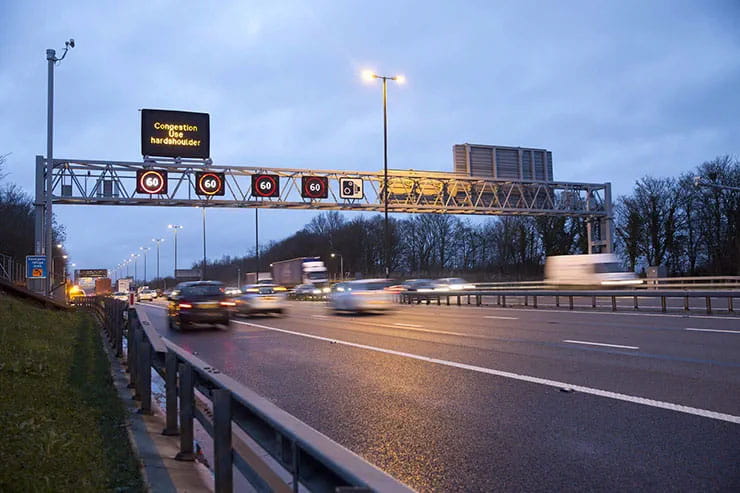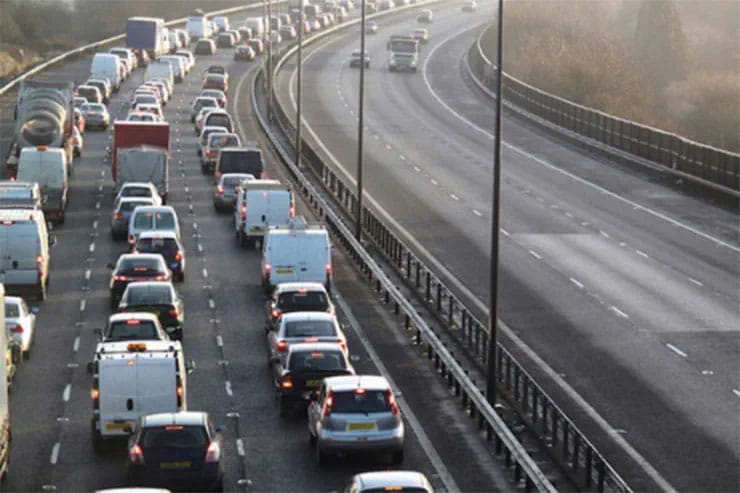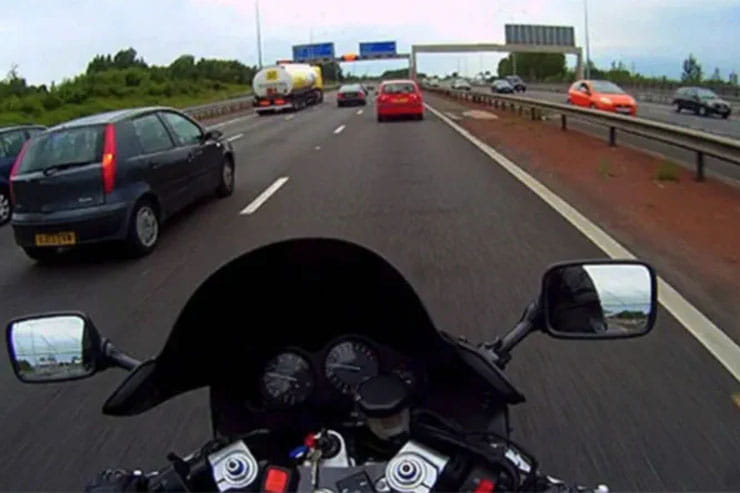Radar and camera systems designed to keep smart motorways safe have suffered vast numbers of failures that make the prospect of a breakdown truly terrifying as it could leave you stranded in live traffic with no hard shoulder as refuge.
Figures revealed in Freedom of Information request by BBC’s Panorama show that there were 397 power losses on smart motorways between June 2022 and February 2024, and some of them lasted for multiple days leaving no cameras, radars or electronic signs in action on busy stretches of motorway. Beyond that, there were 2331 faults in radar systems on smart motorways in 2022 alone, each taking an average of more than five days to remedy.
The report comes more than two years after plans for more smart motorways were shelved in the wake of a House of Commons Transport Committee report that said extra research was needed to ensure safety. That report said that authorities “underestimates the scale of safety measures needed effectively and reliably to mitigate the risks associated with permanent removal of hard shoulders on all-lane running motorways” and that they “failed to deliver safety improvements to all-lane running motorways in a timely fashion.”
The new Panorama information appears to show that there’s still no improvement, even though the pause to smart motorway expansion is due to come to an end in 2025.
A progress report on smart motorways, published late last year by National Highways, says that it “remains too early to see the impact of the actions we have delivered so far” and that “drivers need to feel confident using our roads and we acknowledge we have more work to do in this area.” The fact that vital safety systems including the cameras and radars relied upon to ‘see’ broken down vehicles that are in live traffic lanes are sometimes inoperative is not conducive to improving confidence.
The National Highways progress report clearly shows the problems that smart motorways have when it comes to broken-down vehicles. During five years between 2017 and 2021, the rates of PIC (Personal Injury Collision), FWI (Fatal and Weighted Injuries) and KSI (Killed or Seriously Injured) casualties for stopped vehicles were higher on ‘ALR’ (all-lane running) and ‘DHS’ (dynamic hard shoulder) motorways than on ‘conventional’ (non-smart) motorways or ‘controlled’ motorways – the type with variable speed limits but still retaining a permanent hard shoulder.
And it’s not by a small margin, either. Per hundred million vehicle miles, KSI rates related to stopped vehicles on all-lane running (ALR) motorways are more than twice as high as on conventional motorways and three times as high as on ‘controlled’ motorways with a permanent hard shoulder. In short, having a hard shoulder saves lives. Overall PIC rates for stopped vehicles are lowest on conventional, dumb motorways, followed by controlled motorways, with those that use the hard shoulder as a running lane lagging behind.
When it comes to PIC rates for moving vehicle collisions, conventional dumb motorways again come out on top – with 5.48 per hundred million vehicle miles – although the advantage over all-lane running (ALR) motorways is too small to be statistically significant (5.66 PIC per HMVM for ALR motorways). The other two types of smart motorway (DHS and Controlled) both lag behind on that metric. When it comes to KSI accidents in moving vehicles, though, the picture is reversed, with DHS motorways winning the day and conventional motorways in last position – albeit with much smaller differences between the accident rates than when looking at stopped vehicle accidents.
UK Motorway types
Conventional motorways: The ones we grew up with, with fixed speed limits and a permanent hard shoulder.
Controlled motorways: Motorways with variable mandatory speed limits shown on overhead signs, used to help control traffic flow. There’s still a permanent hard shoulder.
Dynamic Hard Shoulder (DHS) motorways: As well as variable speed limits, DHS motorways have the ability to temporarily increase capacity by opening the hard shoulder to traffic during busy periods, with electronic signs to show if they’re open or not. Speed limited to 60mph when the hard shoulder is open to traffic.
All-lane running (ALR) motorways: Feature variable speed limits and hard shoulders that are permanently open to traffic to increase capacity without the need to widen the motorway. There are emergency ‘refuges’ for broken-down vehicles, but they’re not much use if you break down in the wrong spot. Radar and camera technology is used to ‘see’ stopped vehicles, close the lane and summon help, but it’s proving unreliable.
As well as the problems of failing radar and camera systems that are supposed to spot stopped vehicles and prevent accident on all-lane running motorways, plans to increase the number of emergency refuge areas are running behind schedule.
Back in 2020 the Government said it would build an additional 150 of them by 2025, but four years into that timescale just 13 of those have been finished and another 34 are under construction, leaving 103 still unaccounted for.
If you’d like to chat about this article or anything else biking related, join us and thousands of other riders at the Bennetts BikeSocial Facebook page.










